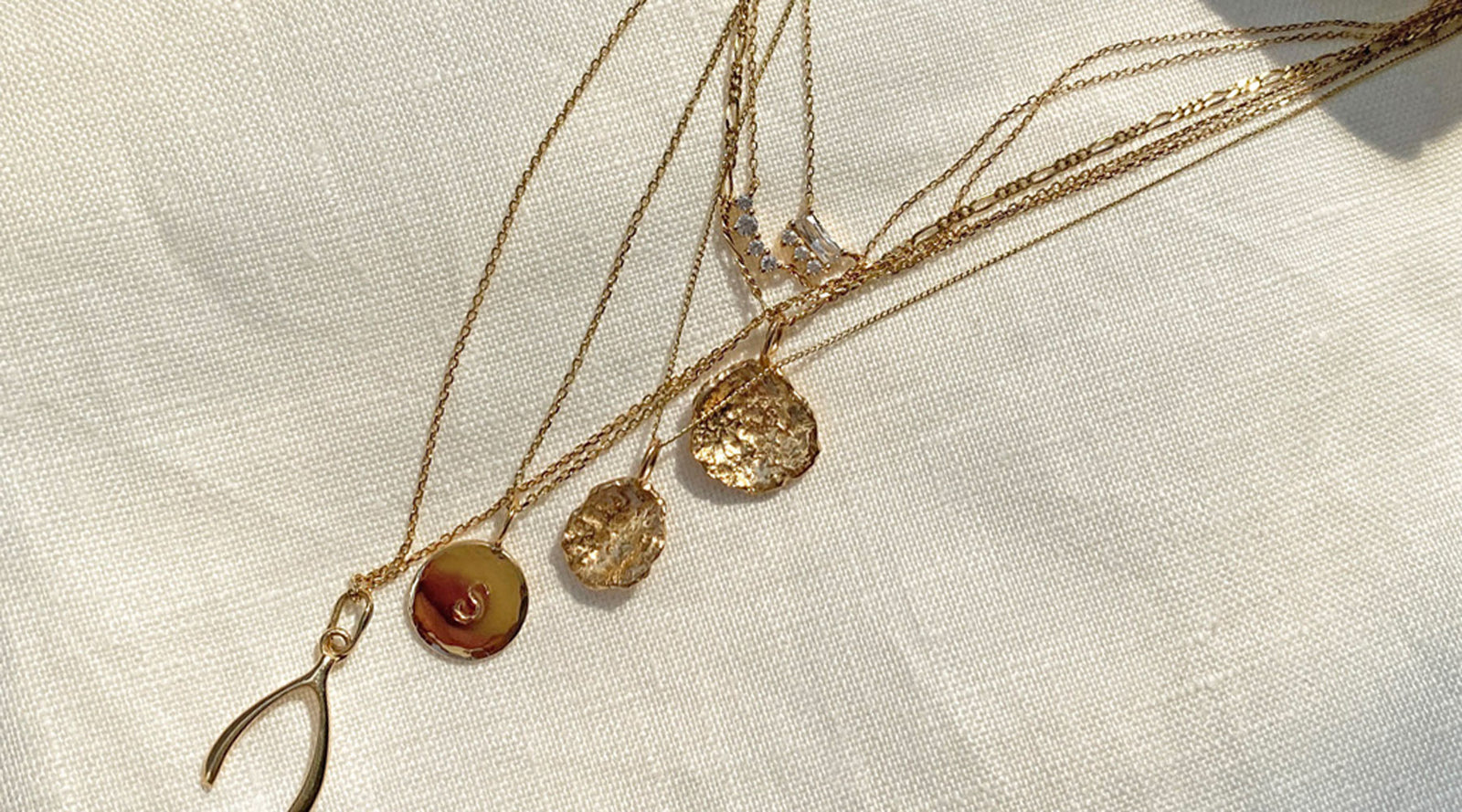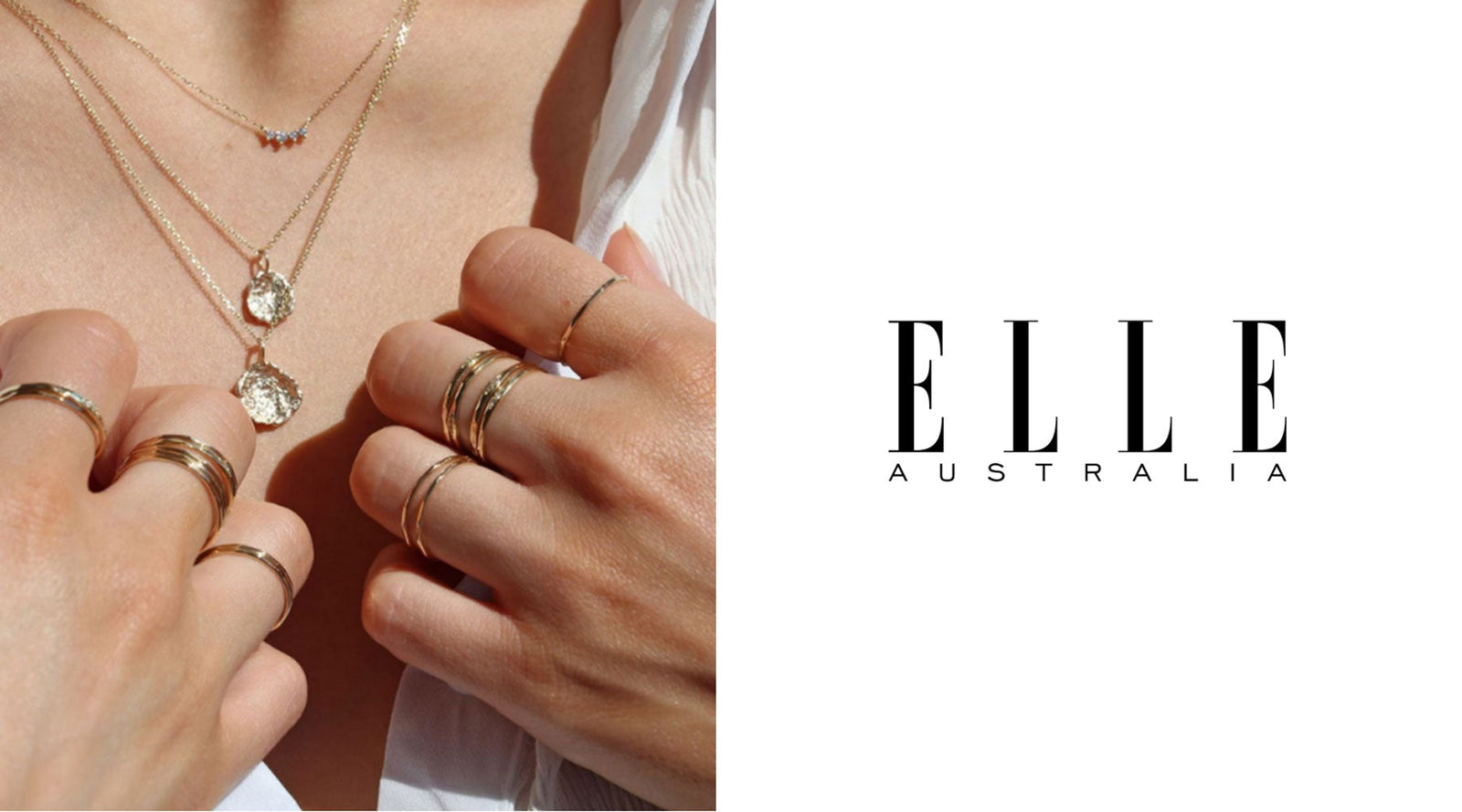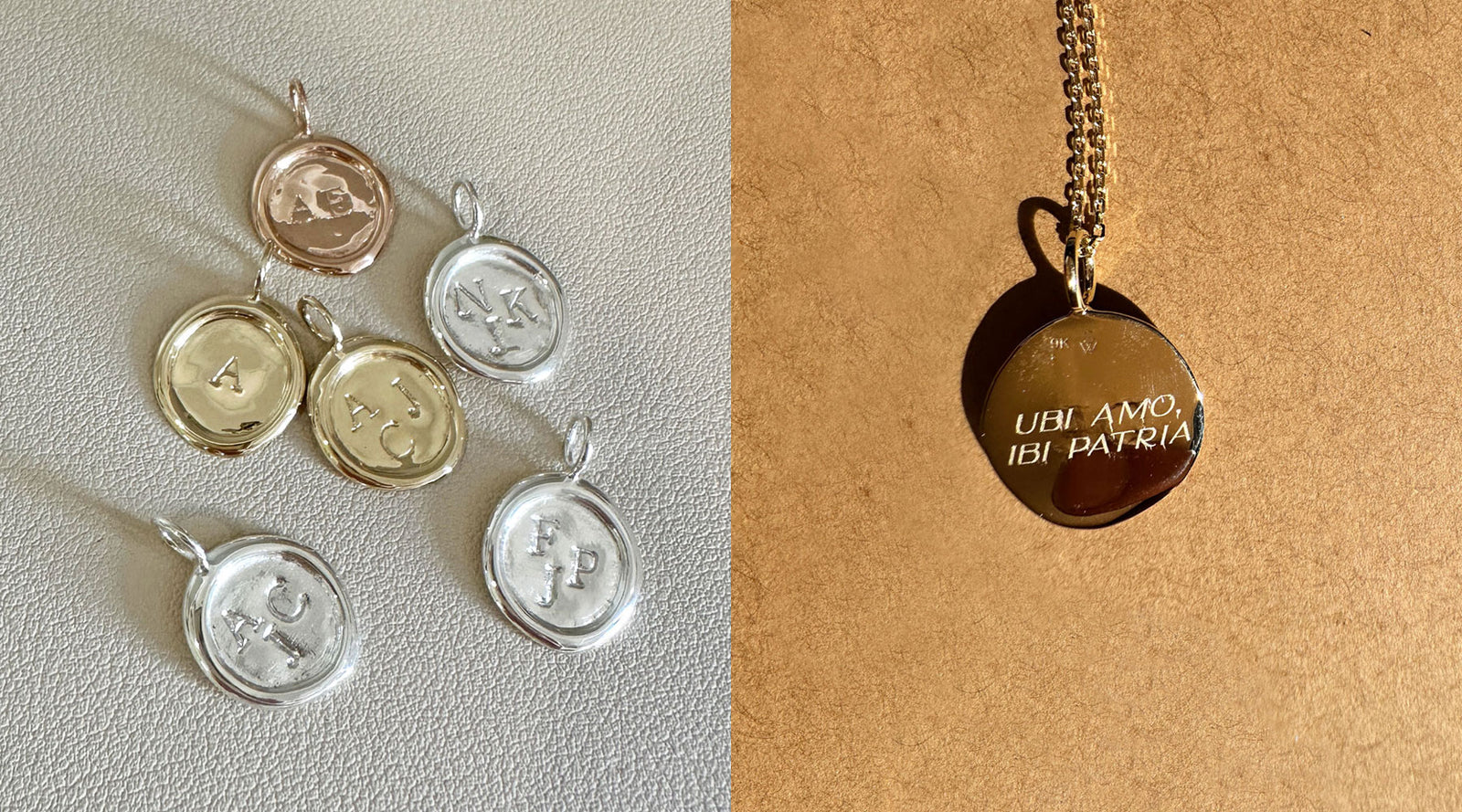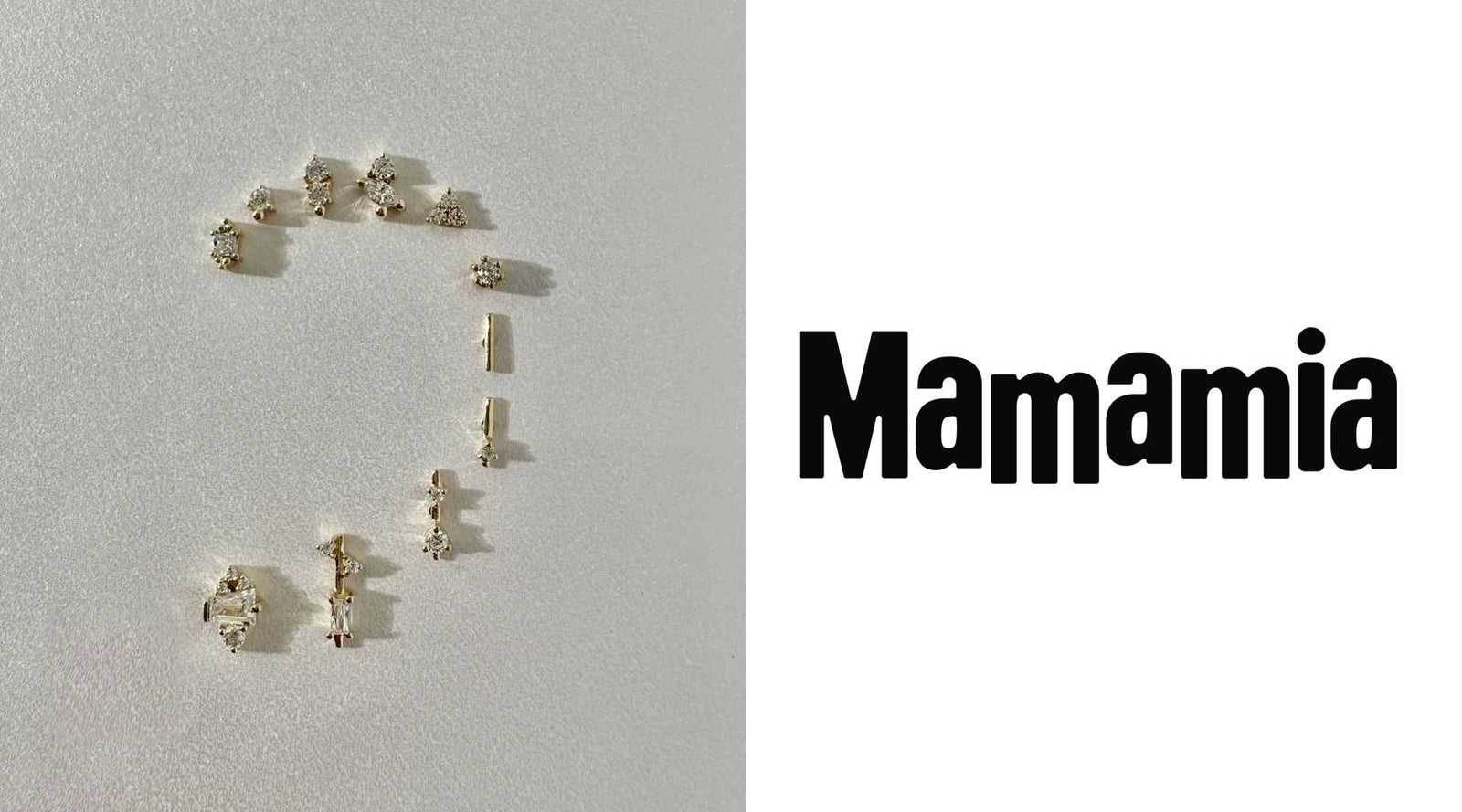
With so many terms to describe gold jewellery, it can be confusing to know exactly what you’re buying, the value of your pieces and how to look after them.
Here we explain the difference between solid gold, gold plated or gold vermeil and gold filled jewellery.

Solid Gold
Solid Gold jewellery (colloquially referred to as 'real gold') is the most valuable form of jewellery you can buy.
You'll often see solid gold jewellery denoted as a number followed by 'k' or 'ct'. E.g. 9k gold or 9ct gold. This refers to the 'purity' of gold, which is expressed as carats ('ct') or karats ('k').
The purest form of gold you can get is 24k gold which is 100% pure gold. 24k gold is very yellow in colour and soft in texture. As it's too soft to practically use in jewellery, pure gold is often mixed (aka ‘alloyed’) with other metals to make it more durable. These gold alloys are what we refer to as 'solid gold' in jewellery.
The higher the proportion of pure gold to other metals, the higher the number of karats the gold is. The most popular types of solid gold used for jewellery are 9k, 10k, 14k and 18k.
Gold is one of the most valuable resources in the world and and will last a very long time if cared for properly. It will not wear away like gold filled or plated jewellery and can be easily melted down and re-used/recycled over and over again to create new pieces of jewellery.
Gold Filled
To be very clear, Gold Filled is not the same as 'real gold' or Solid Gold. It is a fraction of the cost of Solid Gold and is made by bonding a layer of gold to a base metal to give it the appearance of gold.
The process involves a high amount of heat and pressure and the resultant gold filled piece is typically more durable than a gold plated piece, but does not last as long as Solid Gold. Gold filled jewellery is more suited to fast fashion jewellery that has a limited life span.
Over time, the gold layer of Gold Filled jewellery wears away, exposing the base metal underneath. Repairing and restoring the gold colour on gold filled jewellery is difficult and would often involve 'plating' rather than the original process of 'bonding'.
Gold Plated / Gold Vermeil
Gold Plated jewellery consists of a very thin layer of gold being electrically charged onto a base metal or sterling silver.
If gold is plated over sterling silver, this is also known as “Vermeil” (pronounced ver-may).
You'll often see Gold Plated jewellery expressed as a number of karats as well. E.g. '14k Gold Plated'. In this example, the number of karats (14k) refers to the very thin layer of gold that is plated over a base metal or sterling silver.
There are 2 very important things to note here:
1. Although it is a layer of real gold used in plating, it is only about 0.5 microns on average, or up to 5 microns for heavy gold plating that is used. To give some context, 1 micron = 1 millionth of a metre, and the average human hair is 70 microns thick! So it is only a microscopic level of gold which does not compare in volume to a Solid Gold piece of jewellery.
2. It is important not to confuse gold plated naming conventions with solid gold. In the above example, a 14k gold plated piece of jewellery should be clearly stated as '14k Gold Plated'. A solid 14k gold piece of jewellery would be stated as '14k Gold' or '14k Solid Gold' or 'Solid 14k Gold'.
When purchasing jewellery, it is important to be sure of whether you are purchasing solid gold or plated gold. There is a large discrepancy in value and there have been instances where some retailers may omit the word 'plated' when describing their jewellery which can be very misleading.
Gold Plated jewellery is the cheapest and lowest quality of the three metal types. They have an average lifespan of up to a year (with minimal exposure to moisture) and require regular re-plating in order to maintain their gold appearance.
Which one is the best?

There are pros and cons to all types of metals, but Solid Gold is generally the more superior metal because it’s the most durable, valuable and least irritating to those that have allergies to base metals. However, Solid Gold will be more expensive than plated or filled metals.
Gold Plated pieces are a more affordable alternative, however they only contain a tiny amount of gold and any friction will cause the plating to rub off quickly, leaving a dull piece of metal. Most base metals used in Gold Plated jewellery also tend to stain your skin green or cause allergic reactions. Gold Plated jewellery is only suitable for fashion jewellery, and requires more care and maintenance, as exposure to small amounts of moisture, sweat and lotions will degrade the piece rapidly. Regular re-plating is also required to restore pieces back to their original condition, resulting in added ongoing expenses.
Gold Filled pieces are also a more affordable alternative to Solid Gold, however over time they will also degrade, lose their colour and are difficult to restore.
With more affordable alternatives in lower carat gold (e.g. 9k gold), Solid Gold pieces will:
- Always be valuable
- Last longer and require less maintenance
- Encourage sustainability due to the longer wearing nature of fine jewellery pieces
SIT & WONDER was created to meet this need for premium, yet accessible fine jewellery, in a market saturated by two extremes: fast-fashion and unattainable luxury.
All of our jewellery is either crafted in Solid Sterling Silver or Solid Gold, at accessible price points.



